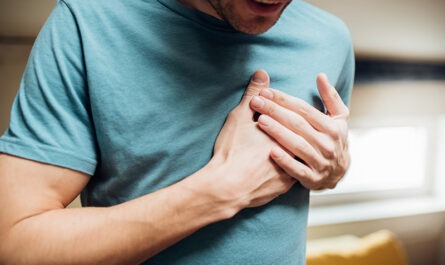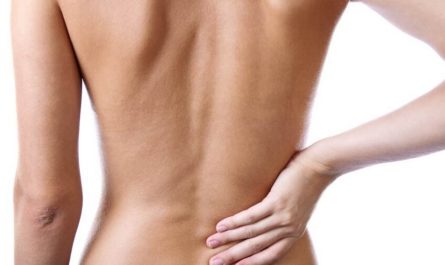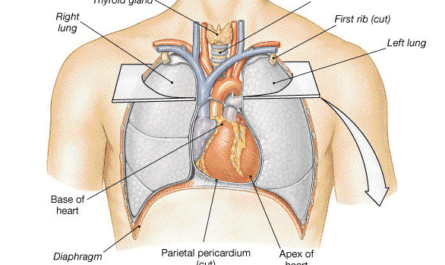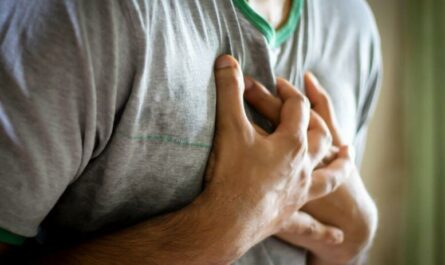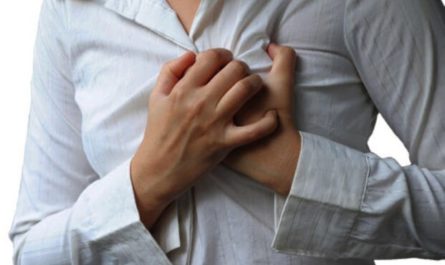The appendix is a small worm-like organ attached to your large intestine. It is a thin tube about two to four inches long sitting at the large intestine and small intestine junction. The appendix is often overshadowed by its more prominent counterparts. However, it plays a crucial role in our understanding of abdominal pain and potential health issues. In this article, we’ll discuss where is your appendix and the anatomy of the appendix. We will also explore its significance and the importance of knowing where it resides within your body.
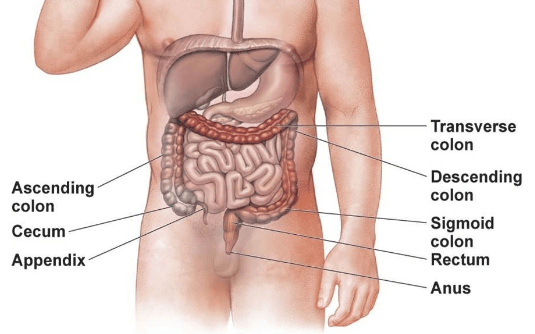
What is the Appendix?
The appendix is a small, pouch-like structure that protrudes from the first part of the large intestine, known as the cecum. Despite its diminutive size, the appendix has garnered significant attention due to its potential to cause appendicitis, a condition that can be life-threatening if left untreated.
While the appendix was once believed to play a role in digestion, modern medical research has revealed that it has no known essential bodily function in humans. However, its strategic location and susceptibility to inflammation make it a crucial organ to understand, especially when it comes to recognizing and addressing potential health issues.
Anatomy of the Appendix
To better understand the location of the appendix, let’s first explore its anatomy:
- Size and Shape: The appendix is typically finger-shaped and measures approximately 3-4 inches (7.6-10.2 cm) in length. Its size can vary from person to person, but it is generally considered a small organ. The appendix has a narrow, tubular structure with a closed-end, resembling a small pouch.
- Attachment: The appendix is connected to the cecum through a small opening called the appendiceal orifice. This connection allows for the passage of materials between the appendix and the larger intestine. The appendix is held in place by a small fold of tissue called the mesoappendix.
- Histology: The appendix has a similar structure to the rest of the large intestine, with a lumen (central cavity) lined by a mucous membrane. The wall of the appendix consists of several layers, including the mucosa, submucosa, and serosa.
While the appendix may seem like a relatively simple structure, its location and anatomy play a crucial role in the diagnosis of appendicitis.
Where Exactly is the Appendix Located?
While the general location of the appendix is in the lower right abdomen, its precise position can vary slightly from person to person. Typically, the appendix is located in the right iliac fossa, which is the inward curve of the hip bone on the right side of the body.
To find the approximate location of your appendix, you can press gently in the area between your right hip bone and your navel (belly button). This region is known as McBurney’s point, named after the surgeon who first described the location of the appendix in abdominal pain.
The appendix is typically situated in the right lower quadrant of the abdomen. It is divided into four quadrants by an imaginary line drawn from the navel to the pubic bone and another line drawn horizontally across the navel. The right lower quadrant is the area below the navel and to the right of the midline.
Variations in Appendix Location
While the appendix is most commonly found in the right iliac fossa, it can sometimes be located in other positions within the abdomen.
These variations in location can make it more challenging to identify appendicitis symptoms and may require additional diagnostic measures. Some of the less common positions of the appendix include:
1. Pelvic Appendix
In this variation, the appendix is located in the pelvic region, which is the lower part of the abdomen. This position can make it more difficult to detect tenderness or pain during a physical examination, as the appendix may be obscured by other pelvic structures.
2. Retrocecal Appendix
In this case, the appendix is positioned behind the cecum, making it more difficult to palpate (feel) during a physical examination. This variation can also make it challenging to visualize the appendix using imaging techniques like ultrasound.
3. Post-ilial or Pre-ilial Appendix
These terms refer to the appendix being located behind or in front of the iliac vessels (major blood vessels in the abdomen), respectively. These positions can affect the presentation of symptoms and the diagnostic approach.
4. Subhepatic Appendix
In rare cases, the appendix may be located in the upper right abdomen, near the liver. This position is particularly uncommon and can make it challenging to distinguish appendicitis from other conditions affecting the upper abdomen.
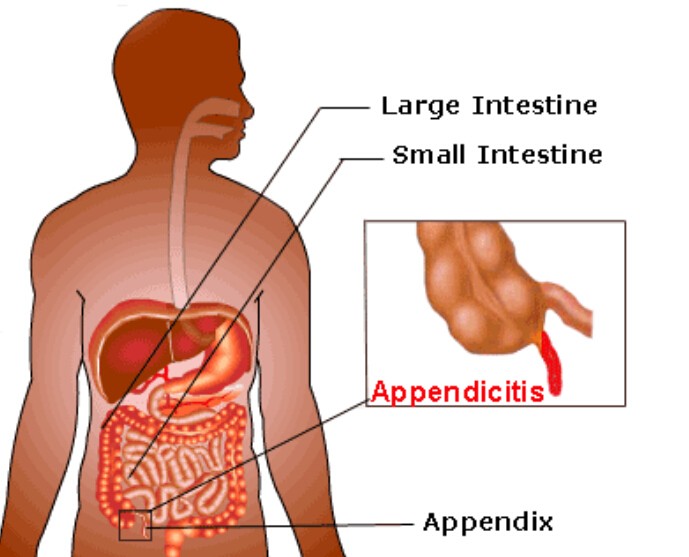
How to Find Your Appendix?
If you’re curious about locating your appendix, there are a few techniques you can try:
1. Palpation
Gently press on the area between your right hip bone and navel (McBurney’s point). You may feel a slight tenderness or discomfort if you’re pressing directly over the appendix.
However, it’s important to note that palpation alone may not be reliable. It is especially true if the appendix is located in an atypical position or if there is significant abdominal tenderness or guarding.
2. Anatomical Landmarks
Use your hip bones and navel as reference points to locate the approximate area where the appendix should be situated. Keep in mind that the appendix’s position can vary. Relying solely on anatomical landmarks may not be accurate in all cases.
3. Professional Assistance
If you’re having difficulty locating your appendix or experiencing any abdominal discomfort, it’s best to consult a healthcare professional. They can perform a physical examination and, if necessary, order imaging tests to visualize the appendix and surrounding structures accurately.
Appendicitis – When Appendix Location Matters?
While knowing the location of your appendix can be an interesting piece of anatomical knowledge, it becomes particularly important in the context of appendicitis. Appendicitis is a medical condition characterized by inflammation or infection of the appendix, and it can have serious consequences if left untreated.
Appendicitis is one of the most common causes of acute abdominal pain requiring surgical intervention. It occurs when the appendix becomes inflamed, often due to an obstruction or infection.
If left untreated, the inflamed appendix can rupture, leading to a potentially life-threatening condition called peritonitis, which is an infection of the abdominal cavity.
Appendicitis Pain Location
One of the key symptoms of appendicitis is abdominal pain, and the location of this pain can provide valuable clues about the underlying condition. In many cases, appendicitis pain follows a specific pattern:
1. Initial Pain
The pain often begins around the navel (belly button) or in the upper abdomen, and it may be dull or mild. This initial pain is sometimes referred to as “periumbilical pain”.It is thought to be caused by the early stages of inflammation in the appendix.
2. Localized Pain
As the inflammation progresses, the pain typically localizes to the right lower abdomen, specifically in the area where the appendix is located. This localized pain is often more severe and can be accompanied by tenderness or guarding.
3. Rebound Tenderness
When a healthcare professional presses down on the area over the appendix. Then it quickly releases the pressure, the patient may experience a sharp, worsening pain. This is known as rebound tenderness and is a common sign of appendicitis.
Other symptoms of appendicitis may include fever, nausea, vomiting, loss of appetite, and abdominal swelling or rigidity. It’s important to note that the severity and presentation of symptoms can vary from person to person. Some individuals may experience atypical or mild symptoms, especially in the early stages of appendicitis.
Treatment for Appendicitis
To diagnose appendicitis, your doctor may order X-rays or a CT scan. Other tests and procedures include a physical exam, urine, and blood test.
Treating appendicitis usually involves surgery to remove the infected organ. Depending on the severity of your condition, your surgeon may perform a laparoscopic or an open appendectomy.
1. Laparoscopic Appendectomy
In this procedure, the doctor will make a few incisions. They will insert a video camera and special surgical tools to remove the appendix. The camera will show the images on a screen to let the surgeon see the abdomen.
When they locate your infected organ, they will tie it off and remove it. Then, they clean, close, and dress the small cuts. This type of surgery lets you recover fast with less scarring and pain. It may also be better for the elderly and people who are overweight.
2. Open Appendectomy
In an open appendectomy, the doctor makes one incision in the lower right side of the abdomen, about two to four inches long. The infected organ is reached by cutting through the layers of skin, connective tissue, and muscle. Once the appendix is removed, your doctor will close the wound with stitches.
This procedure is required if the appendix has ruptured or has an abscess. It also allows your surgeon to clean the abdominal cavity.
3. After surgery
Your doctor may tell you to stay in the hospital for a day or two after your appendectomy. To speed up your healing process:
- Avoid or limit strenuous activities for at least two weeks.
- Apply pressure or place a pillow over your abdomen when you cough, move or laugh to reduce pain.
- Get enough sleep to speed up your recovery. Make sure that you rest whenever you feel tired.
- Call your doctor if you are still experiencing pain despite taking pain medications. Don’t forget to discuss returning to school or work.
- Once you are ready, start moving slowly and take short walks.
Your doctor may also prescribe antibiotics to prevent infection. Keep the incisions clean and watch for any signs of infection, including swelling or redness around the incision, chills, fever, stomach cramps, vomiting, constipation, or diarrhea.
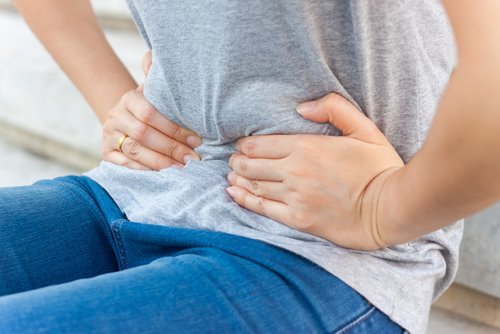
Life Without an Appendix
After an appendectomy, most people can resume their normal activities and diet without any significant long-term effects. The appendix is not an essential organ for digestion or other bodily functions, and its removal has little to no impact on overall health.
While there is a reduced risk of developing appendicitis in the future, it’s still possible for individuals without an appendix to experience abdominal pain or other gastrointestinal issues.
However, these conditions would be unrelated to the absence of the appendix itself and may be caused by other factors, such as digestive disorders, infections, or other underlying medical conditions.
In rare cases, some individuals may experience a condition called “stump appendicitis,” which occurs when a small portion of the appendix is left behind during the appendectomy and becomes inflamed. However, this is an uncommon complication, and most people can live a normal, healthy life without their appendix.
Appendix Location in Children vs Adults
The location of the appendix can vary slightly between children and adults due to differences in anatomical landmarks and the relative positioning of abdominal organs. In children and infants, the appendix may be located higher in the abdomen, closer to the umbilical region (around the navel).
Additionally, children may have a more challenging time communicating the precise location of their abdominal pain. This makes it essential for healthcare professionals to conduct a thorough examination.
In some cases, the symptoms of appendicitis in children may be atypical or non-specific, such as:
- Generalized abdominal pain
- Fever
- Vomiting
- Diarrhea
- Decreased appetite
These non-specific symptoms can make it more challenging to diagnose appendicitis in children, especially in younger age groups.
When to See a Doctor?
If you experience severe abdominal pain, especially in the lower right abdomen, it’s crucial to seek medical attention promptly. Delaying treatment for appendicitis can increase the risk of complications, such as a ruptured appendix or peritonitis.
Other symptoms that warrant immediate evaluation include:
- Fever
- Nausea and vomiting
- Worsening abdominal pain
- Inability to pass gas or have a bowel movement
- A family history of appendicitis
While these symptoms can be indicative of appendicitis, they can also be associated with other medical conditions. Therefore, it’s essential to consult a healthcare professional for an accurate diagnosis and appropriate treatment.
In some cases, the symptoms of appendicitis may be mild or atypical, making it challenging to recognize the condition. If you experience persistent or unexplained abdominal discomfort, it’s always better to err on the side of caution and seek medical advice.

